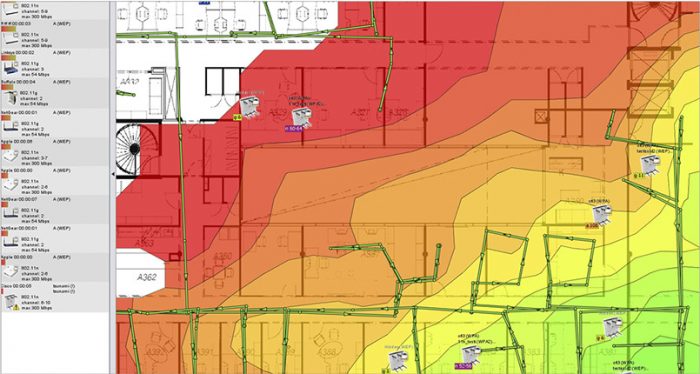

If your organization separates areas of responsibility between the network and server teams, there are two choices: Aruba 70 Series Mobility Controllers. With the Aruba product line, you’ll be looking at three different models to support your needs. These requirements necessitate a Wi-Fi controller architecture unless you really want to manage the hundreds of wireless APs needed to support this campus individually.

Not overly aggressive, but, certainly a larger campus with some clear requirements that could be challenging. The users love mobility and expect the softphones will work flawlessly on wired or wireless connections. There’s even some talk about BYOD, but that’s a mystery! You plan eight wireless APs per floor to cover the square footage.
WIFI HEAT MAP PLUS
You can plan on 110 to 120 users per floor with corporate laptops, smartphones and tablets plus guest users. The offices are interior to the building, and cubes line the outside of the “rectangle”.
WIFI HEAT MAP BLUETOOTH
Bluetooth Low Energy (BLE) support isn’t required but could be a nice service for the business at a later date. It’s a four-building campus, each building is three stories (32,000 square feet per floor), using tilt-wall construction, concrete flooring and sheetrock offices. To provide some context for this discussion, let’s consider a basic office building found around the world. If you’ve answered those questions and other design questions, broken out your Visio templates and drawn your architecture, and have used some tools (or outsourced) a heat map study, you’re probably ready to start looking at device needs. In my previous article, “Cutting the Cable? Where to Start?”, I introduced a series of questions that need answers when you begin the design phase of your wireless build-out. He has been in the IT industry in various roles for more than 20 years and. About the Author Brian Gleason Blog Contributorīrian Gleason is a full-time lead network engineer for a leading integrated circuit design/manufacturing company in Austin, TX.


 0 kommentar(er)
0 kommentar(er)
